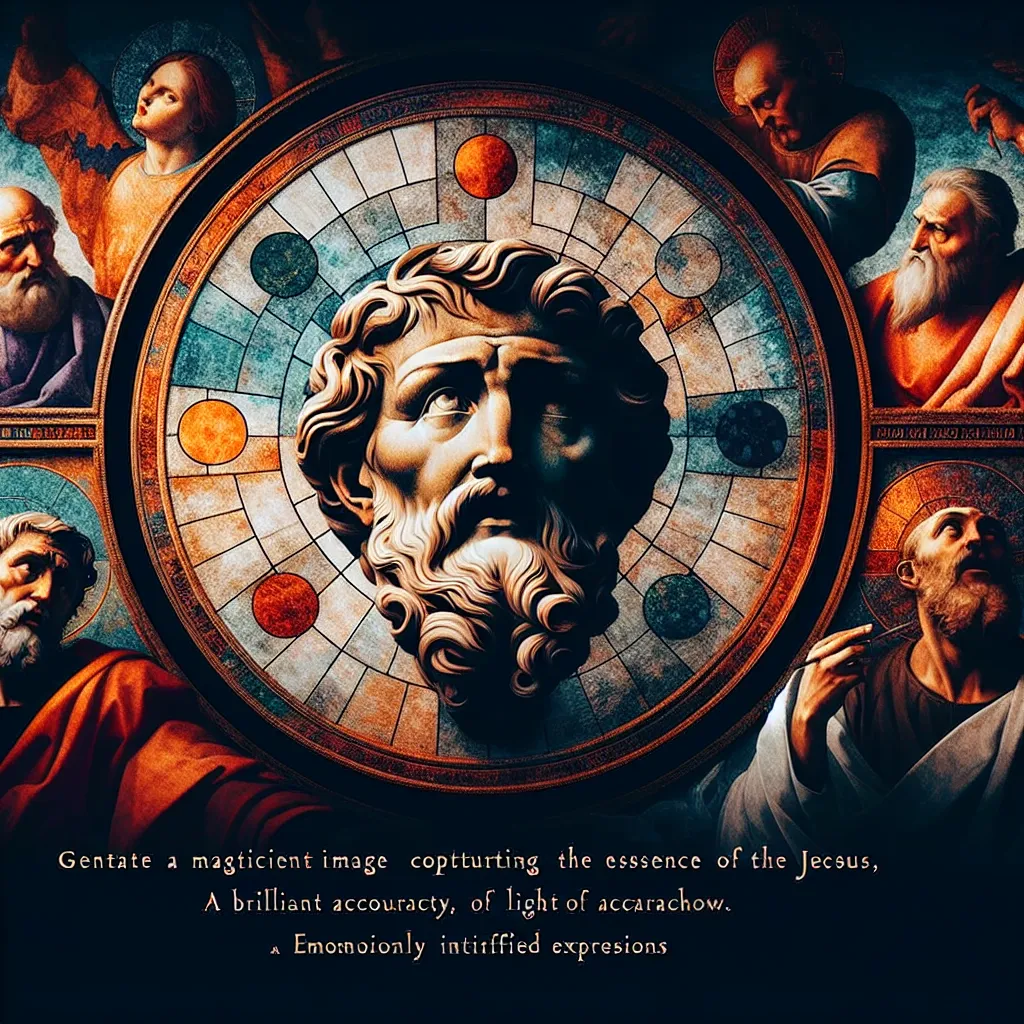
- Published on
- Authors

- Name
- You
The Gospels: The Life of Jesus as a Magical and Mystical Journey
Introduction
The life of Jesus Christ as depicted in the Gospels is usually framed as a series of miracles and divine teachings. However, when viewed through the lens of magical and mystical traditions, Jesus emerges not only as a spiritual leader but as an adept mystic and magician. This exploration weaves together ancient wisdom, advanced science, and esoteric practices to reframe the Gospels as an allegorical guide to spiritual and magical enlightenment.
Jesus as an Alchemist
Alchemy, often regarded as the precursor to modern chemistry, is steeped in symbolism and mystical meaning. Jesus' transformation of water into wine at the wedding in Cana can be viewed as an alchemical transmutation, symbolizing inner transformation and the elevation of the soul.
Table: Key Alchemical Symbols in Jesus' Miracles
| Miracle | Alchemical Process | Symbolic Meaning |
|---|---|---|
| Water into Wine | Transmutation | Inner transformation and spiritual refinement |
| Multiplication of Loaves | Multiplication/Fertility | Abundance through spiritual nourishment |
| Healing the Blind | Purification and Enlightenment | Restoration of spiritual sight |
Healing Miracles as Energetic Manipulation
Advanced science now recognizes the role of energy fields in healing processes. Jesus' numerous healing miracles, such as curing the blind or raising Lazarus from the dead, can be interpreted as mastery over bioenergetic fields, aligning them harmoniously. This perspective aligns with practices in Reiki and other energy healing modalities.
Insight: The Science Behind Healing
- Quantum Physics: Points to the interconnectedness of all particles, supporting the concept of energetic healing.
- Biofield Therapy: Suggests that the human energy field can be manipulated to promote healing, resonating with Jesus’ healing touch.
Parables as Mystical Codes
Jesus' parables are rich with hidden mystic and magical teachings. For instance, the Parable of the Sower speaks to the various states of spiritual receptivity in people, and the ways esoteric knowledge might or might not take root.
Example: The Parable of the Mustard Seed
- Esoteric Interpretation: Suggests small acts or thoughts (seeds) can lead to vast spiritual enlightenment (trees).
- Magical Practice: Cultivating spiritual seeds through continuous meditation and practice.
The Cross and Resurrection as Symbolic Initiation
The Crucifixion and Resurrection can be seen as an initiation rite. In the alchemical and mystical traditions, this journey represents the death of the ego (the crucifixion of lower self) and the rebirth of the higher self (resurrection).
Stages of Initiation
- Nigredo: Dark Night of the Soul (Crucifixion)
- Albedo: Purification (Tomb)
- Citrinitas: Awakening (Resurrection)
- Rubedo: Enlightenment (Ascension)
Conclusion
Reinterpreting the Gospels through a magical perspective offers rich, multilayered insights into the life and teachings of Jesus. His role as a mystic and magician becomes apparent, illuminating pathways of spiritual and magical practices that resonate even in the modern era. By merging advanced science with ancient mystical wisdom, we uncover deeper truths that can guide us on our own spiritual journeys.
By integrating both historical and contemporary perspectives, this approach not only enriches our understanding of the Gospels but also fosters a holistic view that bridges the divide between science and spirituality.
